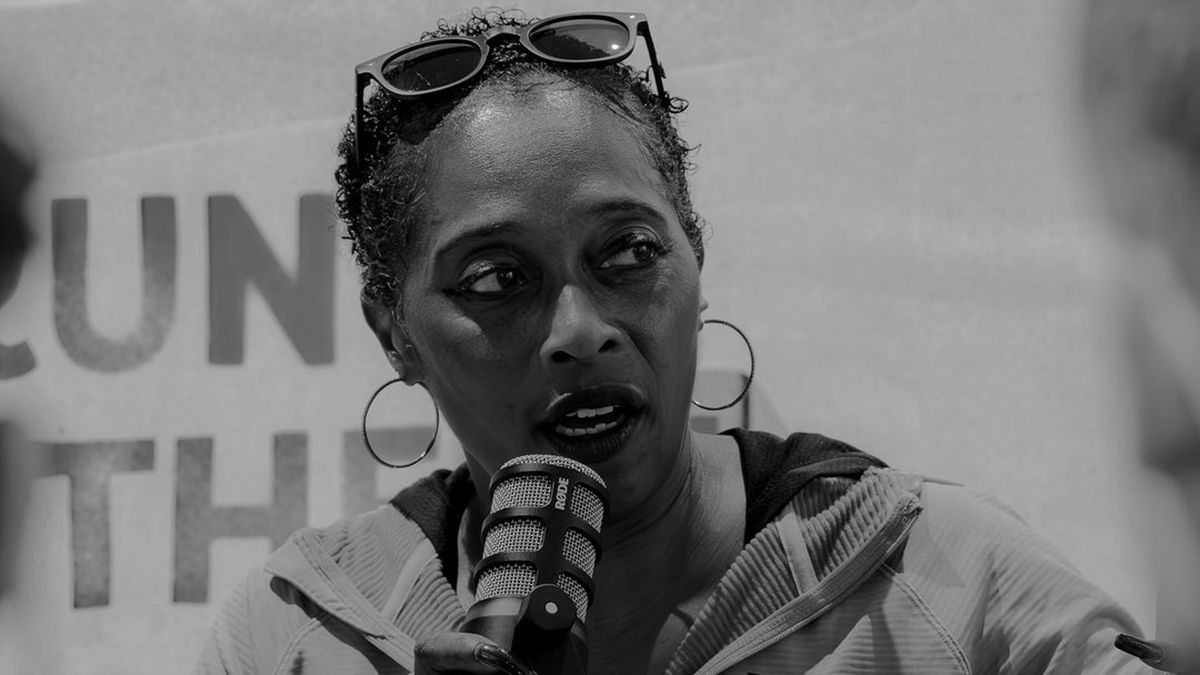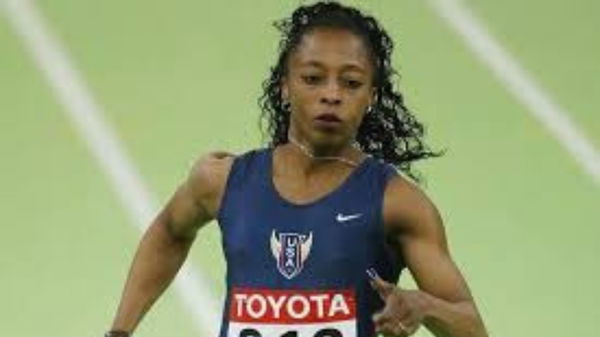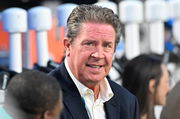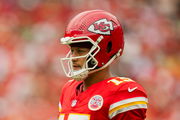

Three decades ago, Gail Devers, now 57, made a history that has been etched as the very first in American track history. Devers, back in 1993 became the first ever female track athlete to hold a medal in the 100-meter dash in both the Worlds and the Olympics. In 1991, she secured the silver medal in the World Championships. However, the tale is not just woven with a list full of accolades. Rather, it is the hurdles of life that she has to cross to reach the pedestal that makes her story a tale to tell and makes her one of the most decorated female track stars of all time.
Watch What’s Trending Now!
Gail Devers recently joined Justin Gatlin and Rodney Green in the latest episode of the Tidal League podcast. Representing her nation at the Olympic stage in 1988, at just 22 years of age, she was gearing up to get back into the competitive realm soon. However, destiny had planned it differently for Devers. Although she qualified for the 100-meter hurdles in the 1988 Olympics, her health condition took an unexpected twist. Gail started to go through major vision loss and a terrible migraine. She pushed herself through the physical pain and ranked 8th in the Olympics. But things were waiting to take an even worse turn.
Just a year after the Olympics, she was diagnosed with a condition termed Graves’ disease. It’s an auto-immune disease that affects the thyroid gland. After undergoing treatment, she could not wait to step back into the competitive sphere. But as she prepared for the upcoming World Championships of 1991, she “couldn’t feel” her legs. To cure the medical issue, Devers had to sign up for radiation therapy. And it did leave her with repercussions to deal with.
ADVERTISEMENT
From developing blisters to swelling of her feet to feeling numbness in her legs, she had to fight all of it. Throwing light on the unexpected physical barriers she had to face because of the grave issues posed by Graves’ disease, Devers shared, “I couldn’t feel my legs”. However, neither she nor her coach was ready to settle down for defeat that easily. As Devers shared her troubles with her Coach Bobby (Bob Kersee), he immediately told her, “Can you feel your arms?…well then, tell your feet to keep up okay”. And that’s what Devers decided to do.

ADVERTISEMENT
Gail Devers decided to overcome all the barriers that her health condition had been putting up. Devers knew that with grit and determination, she would be able to defeat every threat she would encounter. She shared, “It was like you know what you’re here so my mentality was you’re still living you’re still breathing you take uphill every day for your rest of your life that’s a very small price to pay to have the quality of life to be able to go out here and do the things you do if you take that for granted that’s on you get your tail and gear let’s go and that’s the talk that I had to myself.” And she did it.
ADVERTISEMENT
From struggling to even barely walk after her treatment, she bagged the silver medal in the 1991 World Championships 100-meter hurdles. And after taking up all the setbacks and the radiation, she made it to the top. She added, “I was the happiest silver medalist ever can”. However, this was just the beginning. She was waiting to add more feathers to her hat to make it a crown.
Gail Devers defied all odds to bring American hurdlers to the world stage
After that, Gail Devers was rarely ready to settle for anything but gold. In 1992, she won the gold in the 100-meter dash at the Barcelona Olympics. And alongside that, she won back-to-back golds in World Championships, not just in the 100-meter dash but also in the 100-meter hurdles. But she was aiming to make more waves in the track and field world. In the late 1980s, women’s hurdles events faced an unusual barrier.
ADVERTISEMENT

ADVERTISEMENT
The event wasn’t even telecasted on American TV. For years, the U.S. had been absent from the 100-meter hurdles finals on the world stage, with the events going largely unnoticed back home. For a track star like Gail Devers, this wasn’t just a gap in coverage but a call to action. After fighting her way back from a life-threatening health scare, she set her sights on not only claiming a place in these finals but also changing how the world and her countrymen viewed female hurdlers and the sport.
By 1991, just one year after her diagnosis and near retirement, Devers was ready to defy every odd stacked against her. Determined to break the Eastern European stronghold in hurdles, she channeled all her energy into one goal. And that was making the finals and ensuring the event earned its spotlight. She left nothing to chance, filling her hotel room with sticky notes as reminders and rallying herself with a singular focus. Her perseverance became legendary as she competed with a ‘no excuses’ mentality, vowing never to leave the track with anything left undone.
Top Stories
“RIP”: Prayers Pour In as Tom Brady’s Raiders Struck by Tragedy

Footage Surfaces of Florida Police Arresting NASCAR Veteran Over Disturbing Public Misbehavior

“Rest in Peace”: Prayers Pour In From Dan Marino as Dolphins Legend Mourns Tragedy in South Florida Football

Caitlin Clark Shows Concerning Signs vs. Kelsey Plum During USA Camp Debut, per National Reporter

“NFL Was Crying”: Maxx Crosby Says League Forced Him to Remove Shoes Honoring His Daughter

Chiefs QB Patrick Mahomes Loses Faith in Kansas City With Cowboys Decision as FOX Host Calls Out Clark Hunt’s Ownership

The result? She did not only qualify but made a mark in the pages of history. All her hard work paid off well as she continued to weave the thread of her accomplishments. And on the other hand, she also made a clear statement with her win, that the events can’t be ignored anymore as the athletes are now ready to represent their nation on the global stage.
ADVERTISEMENT
ADVERTISEMENT
ADVERTISEMENT
ADVERTISEMENT

